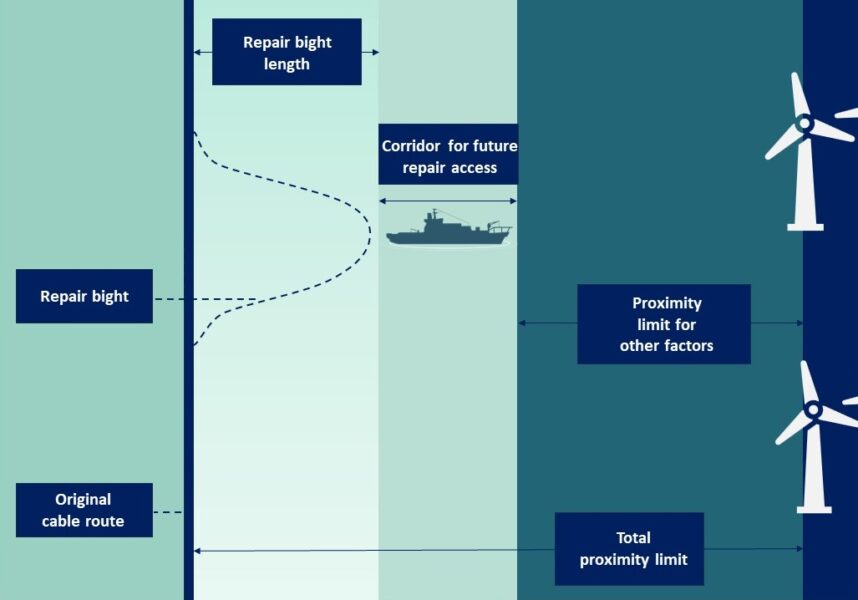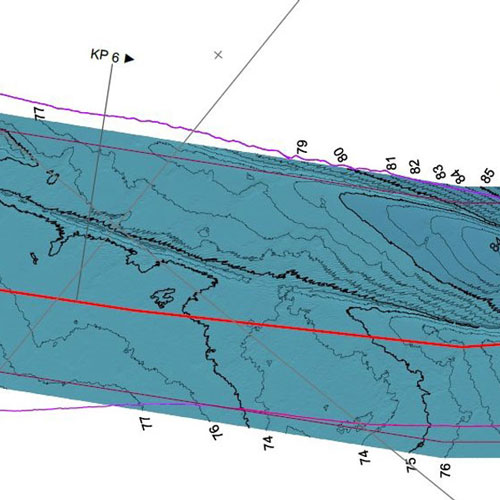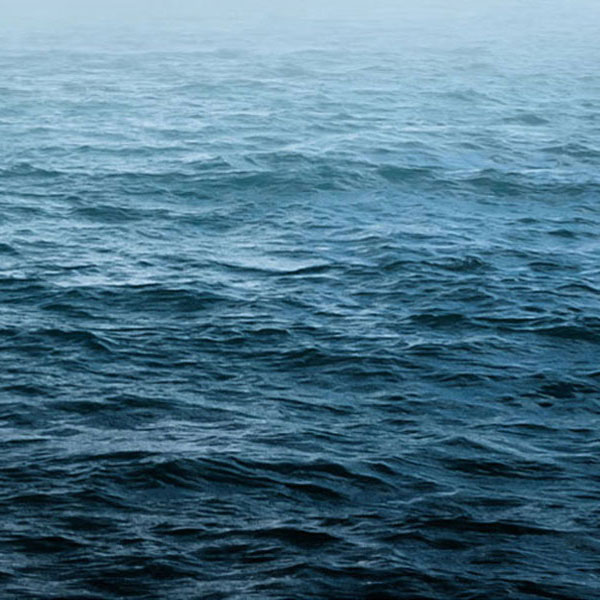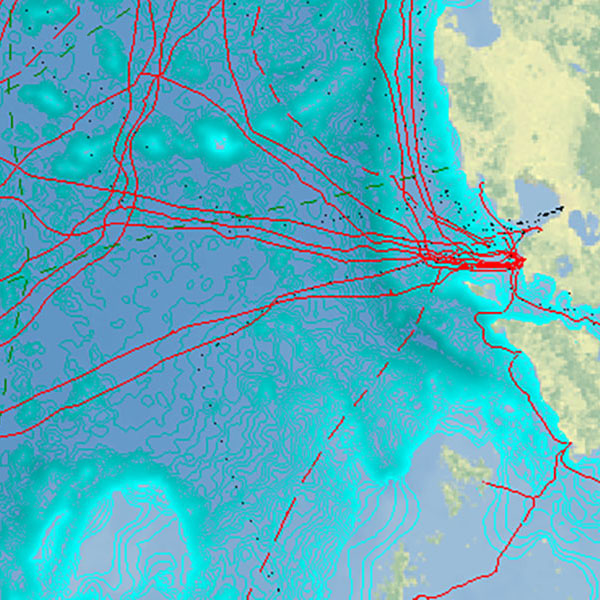Contact Us
Understanding the increasingly complex offshore environment and recognising how multiple seabed users can affect a particular subsea cable venture is essential for both its successful completion and long-term viability.
The range of challenges at a specific location is typically diverse and specific to the circumstances of that site. Consequently, a thorough and precise evaluation of effective working distances must be conducted for all aspects of a given case.
Proximity Agreements
In the future when undertaking a project, the principle of a bilateral proximity agreement for each specific scenario may be a key consideration. An important factor in the overall strategy for developing proximity agreements will be safety management and competency.
Potential considerations in future agreements to which a Proximity Study will be vital:
Our Proximity Studies address installation and maintenance operations of wind farm structures, associated cables and other submarine cables, where such structures and submarine cables will occupy the same or neighbouring areas of seabed.
OiQ’s extensive expertise harmonises the installation and maintenance operations between the fibre optics cables, power and renewable energy sectors to mitigate potential conflicts arising from overlapping installation and maintenance activities that could pose risks to either industry.
As an integral part of the broader Global Marine Group, we have an innate appreciation of the importance of safe marine operations and acutely respect the importance of using the right design, equipment, working methods and competent personnel.
Our comprehensive Proximity Studies assess interactions and identify all associated risks. Our experience and understanding of Minimum Distance of Approach and the control process that should be followed regarding the DP rating of the vessel(s) involved in installation and maintenance operations inform the accuracy and detail of our Proximity Studies.
Beyond the conventional subjects addressed in a cable route Desk Top Study, such as unexploded ordnance, geohazards and anthropogenic, environmental, and archaeological factors, our detailed assessment identifies five key operations that dictate proximity limits:
Our exhaustive studies also encompass the following key considerations:

Capitalising on our integral role within the Global Marine Group, we have acquired significant expertise in the installation and maintenance of subsea cables spanning several decades. This extensive history has afforded us with an in depth comprehension of the skills, technology, equipment, and assets essential for planning, installing, burying, storing, testing, locating, recovering, and maintaining subsea fibre optic cables.
Moreover, our in-depth knowledge of power cables empowers us to provide precise assessments for any subsea project. Our analyses and recommendations are founded on strict adherence to safe marine operations, in accordance with both legal regulations and industry best practices.
Drawing from our rich experiences, we are ideally positioned to conduct comprehensive risk assessed Proximity Studies, ensuring accessible and efficient cable repair to minimise downtime in the event of a fault.
Since our engagement in the first offshore wind farms in the UK in 2004, we continue to be active in the now firmly established European market and growing US market.
OiQ’s proficiency also spans across the global stage. We regularly provide guidance to emerging renewables markets worldwide. Leveraging our knowledge gained from fundamental lessons learned thus far.
As offshore electricity transmission projects continue to expand, the importance of thoughtful space utilisation and routing optimization is essential. This necessity extends beyond accommodating other ocean users, seabed activities, and offshore resources, encompassing the safeguarding of infrastructure integrity and the reliability of the electrical supply.
OceanIQ is dedicated not only to ensuring the integrity of cable assets but also to improving access to both construction and maintenance sites, as well as the export and inter-array cable route. Throughout this process, our goal is to minimize any adverse effects on the optimal cable routing and wind farm design.
QceanIQ regularly supports initiatives led by governments, educational and industry bodies, cable owners and investors seeking to gain greater insights and recommendations on the separation between telecom, interaray and export cables, including the use of shallow drafted vessels for shore end and maintenance operations.
The Submarine Cables and Offshore Energy Installations, Proximity Study Report – published in 2012 was commissioned by the Crown Estate on behalf of a group of industry stakeholders represented by Subsea Cables UK, Renewables UK and the Renewable Energy Association.
Global Marine Group was a key contributor to this report, which aim is to provide recommendations to de-conflict the installation and maintenance operations of the submarine cable and renewable energy industries where the activities or future requirements for maintenance for one may pose a risk for the other.
OiQ’s latest white paper aims to give prospective developers an awareness of the considerations and constraints when engineering the cable routes for a newly proposed offshore windfarm installation.
The paper also focuses on the routeing of cables, to facilitate safe access to a site for construction and maintenance operations over the windfarm’s operational lifespan.
OiQ has actively participated in the cable route engineering aspect of early floating wind projects. In this paper, we delve into the route engineering challenges that the submarine cable industry must address in the future, particularly in relation to separation distances between new and existing cables and floating platforms.
Take a look at our other Cable Route Planning Services

High quality survey data is the cornerstone of all engineering projects. OceanIQ’s experienced survey team manages marine surveys on behalf…

With involvement in the installation and maintenance of subsea cable since the formation of the industry back in 1850, OceanIQ…

We evaluate, advise on, navigate and complete the complex and varying multi-national permit requirements for projects worldwide ensuring that your…

OceanIQ’s® route engineering department draws upon decades of installation and maintenance experience with the latest cable routing software to provide…